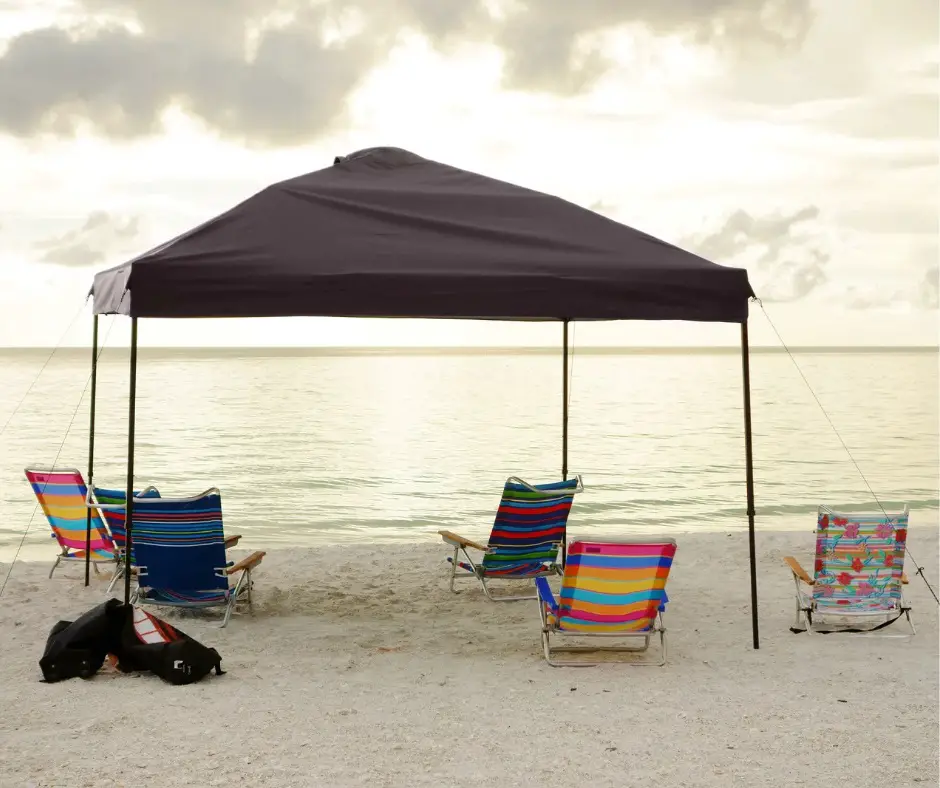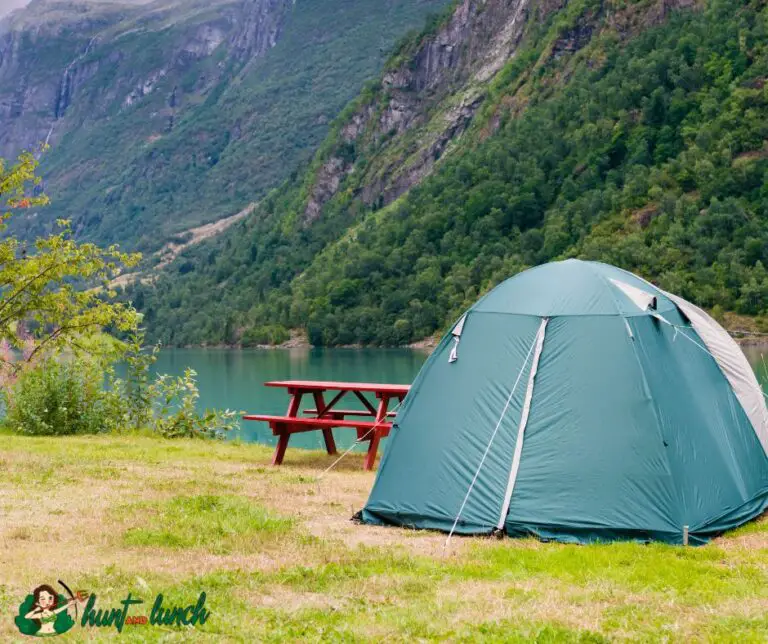
A canopy is an excellent piece of equipment that can protect you from most elements. It provides cover and shade where you can relax with your family and enjoy a happy time. However, how much wind can a canopy withstand?
Most tents can withstand your average wind without bulging. But your canopy will be exposed to its full power when the wind picks up. So if you’re planning to pitch a canopy outside in strong winds, it’s crucial that you have a well-built one that can withstand them.
How Much Wind Can A Pop-Up Or Canopy Tent Handle?
Pop-up canopies are designed to withstand light to moderate winds. They are made of lightweight material and have a small footprint, which makes them easy to set up and take down. However, this does mean that they could be sturdy in extreme conditions. If you’re planning on setting up your pop-up canopy in an area with strong winds, consider getting a more permanent structure like a frame tent or gazebo.
A hard-shell canopy made of fiberglass or plastic is much sturdier than an open frame type because it has fewer openings for gusts of air. The same goes for modern, pop-up shelters like domes. They’re less likely to blow away than old-school tents because they have fewer holes in their structure where air can enter and exit freely.
Factors That Influence a Canopy’s Ability to Resist the Wind
The strength of your canopy depends on many factors. The most important is its size, which determines how much potential energy it has at its disposal. The larger the canopy, the more force it can withstand before being blown down in high winds. A small shelter may withstand a mild breeze, but you should know how strong the wind can get. If you have a large canopy, it can withstand more severe winds.
Other factors include:
The type of canopy
The type of canopy you choose should be determined by the environment in which it will be used. For instance, a fabric canopy would be ideal if you’re looking for an outdoor canopy. They typically made fabric canopies of polyester or vinyl and can easily withstand rain and wind.
However, suppose your goal is to shade your seating area from direct sunlight on hot summer days without worrying about a possible breeze blowing your cover away. In that case, an aluminum frame is a better option. It won’t fly away in strong winds like other materials might do.
The location of the pitching
It’s important to note that the location of your canopy will make a difference in how much wind it can withstand. Pitching your canopy on a hillside or a slope will make it more vulnerable to wind damage. Likewise, pitching your canopy in an open area will also increase its exposure to high winds and thus increase its risk of damage.
Your anchoring technique
Many people who use canopy need to be made aware of the importance of anchoring and how it can affect the longevity of their cover. Also, improper anchoring techniques could lead to a blown-off or toppled-over canopy. This is especially true if you live or work in a windy area.
If you need to know whether your canopy can handle high winds, check with your local hardware store or look online for tips on anchoring your canopy to stay in place during bad weather.
Can My Canopy Survive Windy Gusts Of 50 MPH?
Only some canopies can survive winds of this speed if you have a canopy made of fire-retardant polyethylene or polyurethane. These two types of material are the most resilient to wind and can withstand gusts of up to 50 mph. Canopies made from vinyl or other materials may not fare well in strong winds and could be blown down by a gust as little as 30mph. If your current canopy is to survive windy gusts, take note of its material before putting it up.
What to Do When the Wind Picks Up
If and when the wind picks up, you can do a couple of things to prevent your canopy from tumbling over. Here are a few of those steps to guide you:
Anchor your canopy
If you have a small canopy, if your anchor is lightweight and not very heavy, or if the wind is not too strong, you may be able to use sandbags and weights. You can fill them with water or sand and then place them on the ground under your canopy.
If you want to get even more serious about anchoring down a large canopy and adding extra security to it, consider using chains as well as weights underfoot or on either side. This should provide enough stability so that even high winds won’t knock over the tent.
Use sandbags and weights
If you don’t have access to a wind gauge and your canopy doesn’t come with one, there are two ways you can determine how much weight is necessary for stabilizing. The first option is to use sandbags in place of weights. Sandbags are easy to find and relatively cheap. Still, they’re also more difficult to stay in place than weights because they’re not as stable once anchored to the canopy.
The second option is to find concrete blocks or heavy objects that can be placed under your canopy’s legs at each corner. This method will result in greater stability than sandbags, but it’s more difficult because concrete blocks are less widely available and more expensive than sandbags.
Exercise weights
To find out how much weight your canopy can hold, you should use a weight that is as close to the size of your tent as possible. For example, if you’re using a 10′ x 10′ canopy, you would want to use something weighing about 20 pounds. So your dumbbell weights can be helpful in this regard.
Cinder blocks
If your canopy comes with stakes, you can use them to guide where to place your cinder blocks. Start by positioning one block on each side of the canopy. Then add another block directly behind them and continue until your structure is secure and stable.
Conclusion
Canopies are a great way to enjoy outdoor activities but can also be dangerous if they’re not properly anchored. If you’re planning an outdoor party or event, ensure you have the right type of canopy for your location and know how much wind it can withstand before you begin setting up.

I’m Cindy, a free-spirited outdoor enthusiast. Since childhood, Our family frequently goes on weekend camps and my father, who was a skilled hunter, used to teach my siblings and me valuable things about wildlife survival. I made this blog to share my knowledge, experiences, and tips.






